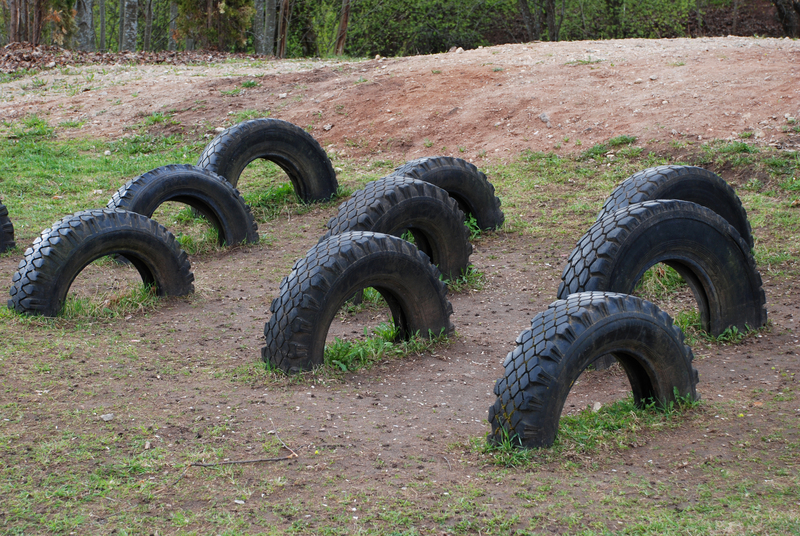Practical Tips for Safe PPE Waste Removal
Personal Protective Equipment (PPE) has become an essential part of daily life and workplace safety, especially since the onset of global health concerns. While PPE is vital for protection, its improper disposal poses severe health and environmental threats. Effective and safe PPE waste removal is paramount to ensure public safety and environmental conservation. This comprehensive, reader-friendly guide explores practical, SEO-optimized tips and methods for safe PPE waste removal to help readers understand the best practices, legal requirements, and environmental concerns involved.
Understanding PPE Waste: Types and Risks
Before diving into the safe disposal techniques, it's crucial to understand what constitutes PPE waste and the risks associated with its mishandling.
What is PPE Waste?
PPE waste refers to discarded items such as:
- Masks (e.g., surgical, N95, cloth)
- Gloves (latex, nitrile, vinyl, etc.)
- Face shields and goggles
- Gowns, aprons, and coveralls
- Shoe covers and disposable headgear
These items are potentially contaminated with infectious agents or hazardous substances, which is why their safe PPE waste removal is critical.
Risks of Improper PPE Disposal
- Public Health Threats: Exposed used PPE can carry viruses or bacteria, risking community spread.
- Environmental Pollution: Many PPE materials are non-biodegradable and cause plastic pollution.
- Legal Consequences: Regulatory authorities impose fines for improper hazardous waste disposal.

Step-by-Step Guide to Safe PPE Waste Removal
Removing PPE waste isn't just about throwing used items away. It requires a systematic, cautious approach to prevent cross-contamination and environmental harm. Here's how you can manage PPE disposal safely at your home, workplace, or healthcare setting.
1. Always Use Designated PPE Disposal Bins
- Place clearly labeled, touch-free bins in strategic locations where PPE is used or removed.
- Opt for bins with lids to prevent accidental exposure and pest intrusion.
- Never mix PPE waste with regular trash or recyclables.
2. Segregate Contaminated PPE Waste
- Separate visibly contaminated PPE (e.g., with blood or body fluids) from general or low-risk PPE.
- Use color-coded bags (often yellow or red) for high-risk, infectious PPE waste as per local regulations.
- Consult with your facility's waste management experts for correct protocols.
3. Safe Removal and Handling Techniques
- Remove PPE slowly, avoiding contact with the outside of masks and gloves.
- Perform hand hygiene (wash with soap and water or use sanitizer) immediately after removing PPE.
- Never reuse single-use PPE items.
- Minimize handling and avoid compressing PPE waste when placing into bins.
4. Bagging and Containing PPE Waste
- Double-bag PPE waste if the outer bag gets damaged or contaminated.
- Seal bags tightly using ties or clips before moving to collection points.
- Label bags if required, especially in healthcare or high-risk environments.
5. Storage Prior to Collection
- Store sealed PPE waste in a cool, secure, well-ventilated area away from public access until disposal.
- Avoid overfilling storage areas to reduce the chance of spillage.
Ensuring Compliance with Local Regulations
Local waste management rules often specify how PPE waste should be disposed of. Here's how to stay compliant:
- Check municipal or national guidelines on hazardous or biomedical waste.
- Only use authorized waste collection services for high-risk or infectious PPE waste.
- Keep records of PPE disposal, especially for commercial and healthcare facilities.
Note:
Improper disposal can result in significant legal penalties and harm organizational reputation. Be proactive in educating staff and users on the correct procedures.
Environmentally Responsible Disposal of PPE Waste
Most PPE is made from plastics and synthetic fibers. If not disposed of correctly, it contributes to landfill overflow and ocean pollution. Here are eco-friendly PPE waste removal tips:
1. Reduce and Reuse Where Safe
- Use reusable PPE like washable masks and gowns where safe and permitted.
- Adhere to strict cleaning protocols for reusable PPE to maintain safety standards.
2. Support PPE Recycling Initiatives
- Investigate local programs that recycle masks and gloves (some manufacturers and NGOs offer collection points).
- Never recycle contaminated PPE in standard recycling bins unless programs are specifically equipped to process them.
3. Avoid Littering and Inform Others
- Educate others about the dangers of tossing PPE into streets, waterways, or public spaces.
- Organize or participate in community clean-up programs focusing on PPE litter.
Protection for Waste Handlers: Safety Tips
Proper PPE disposal safety isn't just for users, but also for the janitors, waste management staff, and facility managers handling contaminated waste daily. Here's how to keep workers safe:
- Provide appropriate PPE to all personnel handling waste (e.g., gloves, masks, gowns).
- Offer mandatory training on correct PPE waste handling and removal procedures.
- Ensure easy access to handwashing facilities and sanitizers.
- Immunize workers against hepatitis B, tetanus, or other relevant diseases.
- Regularly disinfect collection bins and storage areas.
Steps for Safe Domestic PPE Disposal
1. Handling PPE at Home
- Place used PPE in a dedicated plastic bag.
- If the house has COVID-19 or other infectious cases, keep PPE waste for at least 72 hours before discarding, per health advisories.
- Seal the bag tightly before throwing in household waste, if no special collection is available.
2. Educate Families and Children
- Teach children and elderly members the importance of proper PPE disposal.
- Display clear instructions near disposal points at home.
Practical Tips for PPE Waste Removal in Workplaces
Offices, factories, public institutions, and hospitality venues must develop a protocol for safe PPE waste collection and removal. Here are actionable steps:
- Install a sufficient number of disposal bins in high-traffic areas.
- Train all employees on PPE waste management procedures.
- Appoint a person in charge to oversee waste compliance.
- Maintain regular cleaning schedules for all PPE disposal points.
- Display infographics in common areas to reinforce best practices.
PPE Waste Management and Biomedical Facilities
Medical centers, clinics, and laboratories generate large volumes of infectious PPE waste. Implement rigorous procedures:
- Segregate waste at the source (e.g., contaminated vs. non-contaminated).
- Use puncture-proof, leak-resistant containers for sharp objects like face shields with exposed edges.
- Autoclave or disinfect PPE waste in-line with facility policy before offsite transport where required.
- Keep up-to-date records for audits and regulatory compliance.
Addressing Common Mistakes in PPE Disposal
- Don't flush disposable masks or gloves down toilets - they clog plumbing and pollute oceans.
- Don't burn PPE waste in open fires -- this releases toxic fumes and is illegal in many areas.
- Never store PPE waste in unsealed containers -- this endangers both handlers and the public.
- Avoid mixing PPE with food waste -- cross-contamination can endanger sanitation workers.

Innovative Solutions and Future Trends in PPE Waste Removal
With the surge in PPE use, new safe PPE waste removal technologies are emerging. Watch for:
- Biodegradable PPE: Some manufacturers are producing masks and gloves that safely decompose in landfills.
- Automated PPE Waste Bins: Smart bins that use UV light to disinfect contents before handling.
- Specialized Incinerators: High-efficiency, emissions-controlled burning of medical PPE waste.
- Onsite Disinfection Units: Compact machines for immediate decontamination and shredding of PPE.
Conclusion: Why Safe PPE Waste Disposal Matters
Safe PPE waste removal is not just a regulatory requirement, but a duty to public health and environmental stewardship. Whether at home, work, or healthcare settings, responsible PPE waste management ensures that these single-use items do not become a hazard long after they've served their purpose.
Key takeaways for safe PPE waste removal:
- Use designated and clearly labeled disposal bins for all PPE waste.
- Segregate, bag, and seal used PPE according to risk levels and local guidelines.
- Practice hand hygiene and use protection when handling or transporting PPE waste.
- Stay informed on the latest disposal regulations and innovations.
- Always educate colleagues, family members, and staff on best PPE disposal practices.
By following these practical tips for safe PPE waste removal, you not only protect yourself and others but also contribute to a cleaner, healthier planet -- one safe step at a time.
Additional Resources: